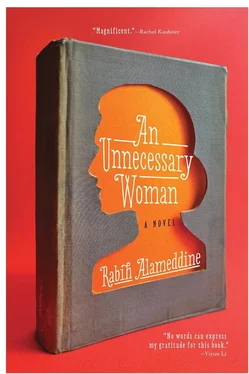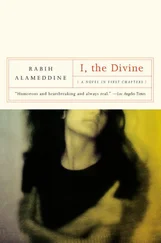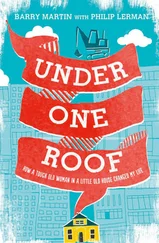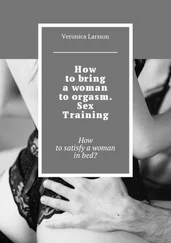Lebanese emigrants visit the museum when they return home for vacation, to show their children, to recapture a sense of pride or what have you. The numbers of European tourists in the museum — Spanish are paella , Germans are wurst —keep increasing. The Italians now visit in larger numbers than the French, or so it appears since unlike the escargots, the macaroni always arrive in groups, rarely as individuals. They come to the National Museum because that’s what cultured people are supposed to do, or so they’re constantly told. Not that anyone is really interested in the art or the history. It is the exception who walks the museum; most visitors rush through it, hustling or hustled. They stay just long enough that once they return to Paris, Lyon, or Genoa, they can say without hesitation that they’ve been to the museum in Beirut. (“It’s cute, small, and ever so quaint!”) Nowadays, school buses from all over Lebanon can be seen parked on the streets outside the building. Children are brought to the museum because that’s what is done. It doesn’t matter what they do once they get there; it only matters that they’re brought.
I come to the museum to be by myself in the world; I am out of the apartment but not in a crowd. It’s one of the rare spaces left in Beirut that is not plagued by background music. In the supermarket, along the corniche, in hospitals, on the street, in stores, elevators, everywhere in the city, insipid music erupts from tiny nooks to scramble and deaden Beiruti brain waves — a catastrophe to rival the civil war, if you ask me. In the museum, I am able to think. In one of his novels, the rancorous and ever ornery Thomas Bernhard has a character who sits three mornings a week on a settee before the same painting, Tintoretto’s Portrait of a White-Bearded Man , at the Kunsthistorisches Museum, because the room has the ideal temperature for thinking, a constant eighteen degrees centigrade maintained all year round to preserve the canvases. I don’t know what the temperature in my museum is, but it’s pleasant.
People, visitors, are beginning to crowd me out. I sincerely believe that I’m going to be crushed, mashed to a pulp, as if I am in a mortar and the crowd is the pestle. As you know, I avoid assemblages, eschew accumulations of people. I’m reaching the point when I’ll no longer enjoy spending slow time in here.
The museum is all ocher limestone, protective glass, and ancient mosaics. It’s built in Egyptian revival style, but I have no idea what that means. It looks French to me, if anything. The first thing that catches my attention every time I enter is the staircase. Even though I have walked up those stairs many times, I always feel that they’re built for descent and not ascent, an effect probably due to them splitting at the top and circling toward the unseen mezzanine.
Macaroni aren’t the only visitors today. Two five-year-old boys run around the halls as if in a playground. Unshackled from their mothers, they’re loud and effervescent. The squeak of expensive sneakers reverberates in the air. I’ll admit that I’m not fond of children. They stick to you like burrs, and tearing them off is cumbersome. I don’t dislike them, I simply prefer them not to be around. I’m also not fond of Italians, who aren’t noticeably quieter than children. But then, to be fair, I’m not fond of Arabs or Iranians either, or Americans, the loudest of them all. Well, most of the time I’m not fond of people.
I won’t be able to stay here long, it’s not a good day for the usual museum quiet. Maybe I’ll just spend time with the ancient sarcophagi. Though they’re of different periods, the tombs are so elderly that they seem bound together by sacred ties of centuries-old kinship. My favorite, close to the entrance and its nonfunctional metal detector, is the tomb of a noble. Its height is impressive, probably a meter and a half. All around the bottom of the sarcophagus, the most touching scene from the twenty-fourth book of the Iliad is carved into the old stone. Men, women, gods, and beasts surround Achilles as Priam genuflects to him and kisses his hand.
As I stand before the consummate story, the mother of one of the boys, the back of her skirt clinging to her bottom, perfunctorily admonishes the pair in broken American English. She tells one of them to tuck in his blue plaid shirt. They pay her absolutely no mind, as if she’s as distant as the days of Homer. Their longish hair jumps up and down as much as they do. I’m not sure whether to blame their boisterous misbehavior on Lebanese upbringing or American environment.
My patience, like my time in this world, grows shorter.
A scion of a Lebanese immigrant wrote a novel retelling Priam’s pleading with Achilles for Hector’s body, David Malouf in Ransom , a masterful book. I’ve always been moved by the story, a historic king reduced to begging by his love for his son. Achilles drags Hector’s body behind a chariot in triumph, revenge raging crimson in his veins, but is then able to forgive upon witnessing a father’s grief, a parent’s sorrow. Today, though, possibly because of my mother’s reappearance, I find the sarcophagus a bit unnerving, and I move on.
I walk toward Eshmun’s boys made of marble, but the real boys rush by me in the same direction. I turn and head the opposite way toward Astarte’s thrones. Eshmun and Astarte, two Phoenician gods on either side of the museum — not the gods in person, but substitutes: statues of sons offered to Eshmun the healer in hopes of keeping the real ones healthy, and thrones of the divine Astarte.
All hail to you, two thousand years too late.
Or four thousand years.
I can’t count the number of times I’ve stood before these empty thrones, broken-down relics of the once relevant, different sizes, none of them whole: the stone chipped, the sphinx on the side beheaded, a lion decapitated and de-tailed. My eyes want to see moss growing in the cracks as it does on statues in situ, but the thrones are scrubbed clean. The Phoenicians used to place betyls on the thrones, originally meteorites, sacred stones endowed with life, with the presence of the goddess. None of the betyls remains. The thrones are unoccupied. Astarte, Milton’s “Queen of Heav’n, with crescent horns”—Ashtarout, Ishtar, Aphrodite, Venus — she reigns here no more.
When I am in the museum, my present is waylaid, my recent past forgotten; when I am before these thrones, my life in its entirety is set aside. I feel part of a larger history, of the grand waterwheel of time — delusional on my part, I’m sure. Still, it comforts me. I wonder at times what might have been had I lived in that other world instead of this. Would I sit on one of these thrones? No, I am not Astarte, not a goddess. Maybe a betyl.
When I’m in the museum I think often of Bruno Schulz, probably because of the brouhaha with his mural and the museum in Israel.
A writer and artist, Schulz was Polish, born and raised in a town called Drohobycz. By anybody’s standards, Bruno was odd. He was sickly and shy, socially inept, full of idiosyncratic tics — an unusual child in a harsh world. Like Proust, the other puer aeternus to whom he is sometimes compared, he was immensely talented, and as with Proust, you can say that he was discreet about his desires — not a homosexual, mind you, but a sexual masochist; he liked his Venus in furs. For their eras, both had socially unacceptable desires, although Monsieur Marcel had the chance to indulge his. (Edmund White and others suggest that Proust also had a fetish for desecrating the sacred, particularly photographs of the Pope, though no one is sure how often he practiced it.) In Schulz’s drawings, tall women with giraffe legs trample on dwarves with Schulzian faces. In one of my most cherished, a naked man kneels adoringly before a woman in a negligee as she sits on a bed or taboret, face in profile. Slim straps fall seductively from her shoulders, and we see her nude back as she looks dismissively down at her worshipper, who is wholly engrossed in her stiletto heel. The forefinger of his left hand seems to be tracing the shoe while the right arm encircles it as it would a lover. The man’s cheek is on the floor, his face lost in adulation, as the heel of her right foot presses into his upper back — a supplicant bowing before the exalted Astarte and her shoe.
Читать дальше












